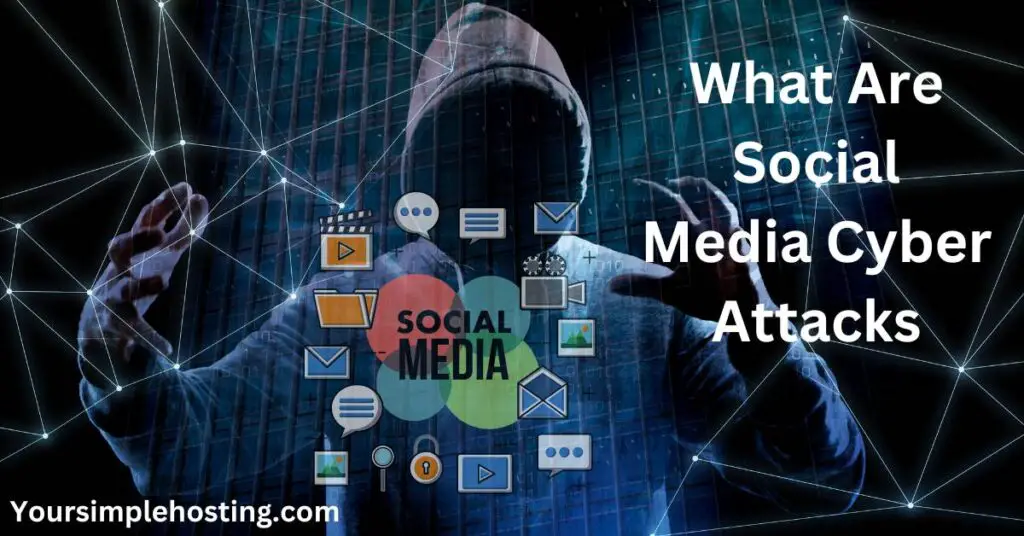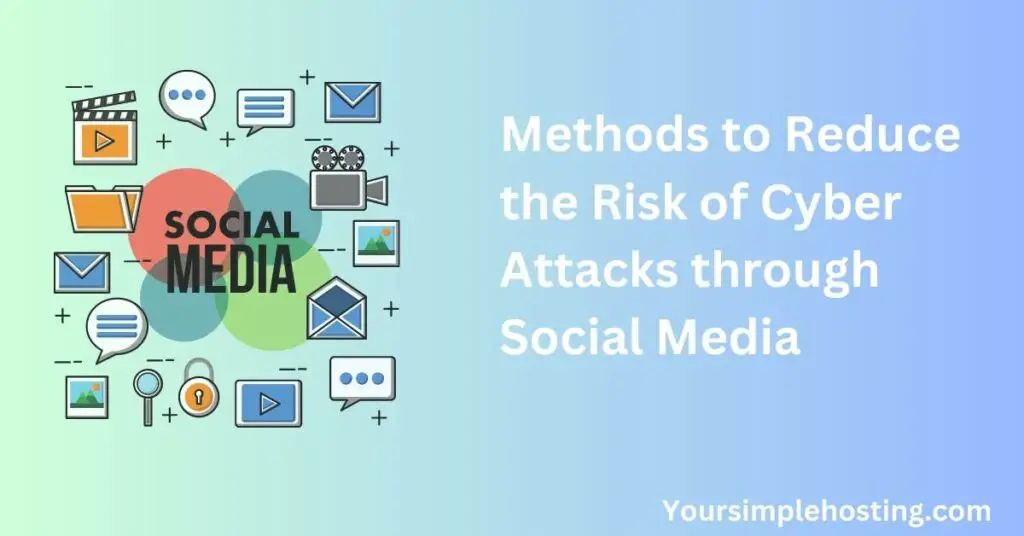To a large extent, our lives revolve around various social networking sites. Social media offers us a way to update, share and connect with our loved ones without any constraints.
However, this increased visibility has also left us open to many cyber threats, the most common of which is a social media attack.
Social media cyber attacks refer to malicious activities that aim to exploit the vulnerabilities of social media platforms and users. These attacks can range from phishing and social engineering to malware and hacking.
In this post, I will go over the different forms of social media cyber attacks, their impact, and the precautions that can be taken to avoid potential data losses.

Table of Contents
Types of Social Media Cyber Attacks
With the ever-changing digital landscape, hackers are exploiting newer techniques to try and gain access to personal user data. This is catalyzed by many social media apps which offer unrestricted access to your profile if a certain number of security walls are bypassed.
Any social media cyber attack can have huge implications ranging from loss of data, data manipulation, financial losses, and reputational damage. With about 2200 cyber attacks happening daily, we, as smart users, must know about the latest attacks to keep problems at bay.
Malware Attack
Malware assaults are carried out by spamming social media users with infected links or files. Malware is hidden in links or files that seem harmless to infect the user’s device. After the device is compromised, the attacker will have unrestricted access to all of the user’s most private information.
Here is what the typical flow of a malware attack looks like:
- Reconnaissance: where an attacker tries to identify potential points of entry.
- Gaining access: where a hacker exploits software vulnerabilities and gains access.
- Lateral movement: the attacker moves laterally through the target network to gain access to additional systems.
- Data exfiltration: where the attacker steals sensitive info.
- Command and control: wherein the attacker gains authoritative access and could try to alter system settings to cover their tracks.
Password Attack
A password attack is a cyber attack used to obtain access to someone else’s social media account by guessing or cracking their password. There are several types of password attacks, including brute force attacks, dictionary attacks, and phishing attacks.
A common example of a password attack in social media is a phishing attack. In this type of attack, the attacker sends a message to the victim, posing as a trustworthy source, such as a social media company or a friend.
The message usually contains a link that leads to a fake login page that looks like the real one. Once the victim enters their login credentials, the attacker can use them to gain access to the victim’s social media account.
Man-in-the-middle Attack
Nearly 35% of all exploitation activity online involves MiTM attacks. This occurs when an attacker intercepts the communication between two parties (in this case, you and Instagram) and can read, modify, or even inject their own messages into the conversation. The attacker becomes a creepy middleman who listens in on your conversation and messes with it.
Imagine that you’re trying to log in to your Instagram account. You enter your username and password, hit “login,” and wait for Instagram’s servers to authenticate you. But in a MITM attack, the attacker secretly sits between you and Instagram, intercepting all the traffic.
When you hit “login,” the attacker grabs your credentials and sends a fake “invalid login” message back to you. You scratch your head and try again, and this time, the attacker sends your credentials to Instagram’s servers and gets a valid response back. But before the response gets back to you, the attacker intercepts and modifies it.
For example, they might change your password or add some spam content to your profile without you knowing.
SQL Injection Attack
In this type of attack, the attacker will embed a code tricking the application into executing unintended SQL commands, helping them gain access to your account.
One famous example of a SQL injection attack is the 2008/2009 Heartland Payment Systems data breach, where attackers used SQL injection to steal over 130 million credit card numbers.
Denial-of-service Attack
This kind of attack is quite common for people who have an online business or are running a website or a blog. The attacker overwhelms the targeted system with excessive traffic or requests, causing it to slow down or crash. Methods like using a VPN, firewalls, and content filtering can help you prevent such attacks.

Methods to Reduce the Risk of Cyber Attacks through Social Media
- Two-factor authentication and complex passwords: Users should take extra precautions to secure their social media accounts. Two-factor authentication, which requires multiple verification methods, may further increase safety and block hacking attempts.
- Anti-virus protection: Protection against malware assaults can easily be achieved with the help of anti-virus and anti-malware software, which users should install and utilize. This way, malware can be identified and eliminated before it does any harm.
- Generating awareness: The more people begin to know about these attacks, the lower the probability of occurrence will become.
- Regular updates: Be sure to update your device with the latest security patches so hackers cannot find new vulnerabilities.
- Restricting access: Avoid granting access to anyone else, and never leave your account logged in someone else’s browser.
Conclusion
Social media cyberattacks can have serious consequences for individuals and organizations. Therefore, it’s essential to take necessary precautions to protect against these attacks, such as using strong passwords, anti-virus, and anti-malware software, limiting sharing of personal information, and being cautious of third-party apps.
By taking these necessary measures, we can ensure a safer and more secure social media experience. Thanks for reading!

Leave a Reply